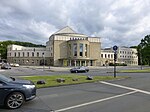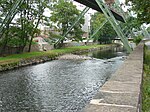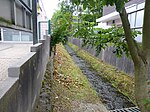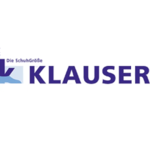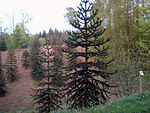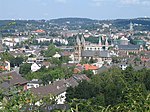Wuppertal-Barmen station
1847 establishments in PrussiaNeoclassical architecture in GermanyRailway stations in Germany opened in 1847Railway stations in WuppertalRhine-Ruhr S-Bahn stations ... and 3 more
S7 (Rhine-Ruhr S-Bahn)S8 (Rhine-Ruhr S-Bahn)S9 (Rhine-Ruhr S-Bahn)

Wuppertal-Barmen station is a station in the city of Wuppertal in the German state of North Rhine-Westphalia on the Elberfeld–Dortmund railway. Its entrance building is protected as a monument. It was Barmen Hauptbahnhof prior to Barmen's incorporation in Wuppertal in 1929. Before the Second World War it was an important stop for express trains and had substantial freight traffic. Its importance declined after the war in favour of Oberbarmen and since the renaming of the Elberfeld station as Wuppertal Hauptbahnhof. The Opernhaus Wuppertal is nearby.
Excerpt from the Wikipedia article Wuppertal-Barmen station (License: CC BY-SA 3.0, Authors, Images).Wuppertal-Barmen station
Hans-Dietrich-Genscher-Platz, Wuppertal Barmen
Geographical coordinates (GPS) Address External links Nearby Places Show on map
Geographical coordinates (GPS)
| Latitude | Longitude |
|---|---|
| N 51.267222222222 ° | E 7.1944444444444 ° |
Address
Bahnhofsempfangsgebäude Barmen
Hans-Dietrich-Genscher-Platz 2
42283 Wuppertal, Barmen
North Rhine-Westphalia, Germany
Open on Google Maps

